What is Artificial Intelligence(AI)? : Simple Detailed Introduction for Dummies
Artificial Intelligence (AI) is a field that has a long history but is still constantly and actively growing and changing. Since the invention of computers or machines, their capability to perform various tasks went on grown exponentially. Humans have developed the power of computer systems in terms of their diverse working domains, their increasing speed, and reducing size with respect to time. In this blog, we will go through a simple definition of modern AI and its challenges. We will also closely look at the difference between AI, ML, and DL.
What is AI in simple words?
The shortest definition of AI could be,
Machine’s that has cognitive intelligence, in short, act like humans.
In simple terms, Artificial intelligence (AI) refers to the simulation of human intelligence in machines that are programmed to think like humans and mimic their cognitive actions. It includes learning, reasoning, problem-solving, and perception. In other words, creating a machine capable of understanding the environment, understanding the problem, and acting intelligently according to the situation. Basically, making machines take decisions like human beings, and at some point, outperform them.
Explaining AI to kids
It can be daunting to explain such complex and powerful technology to many. Hence it is of utmost necessity to dumb down the meaning of AI by making analogies with real life.
Fantastic example by Michael Milford, author of The Complete Guide to Artificial Intelligence for Kids
“Many people, for example, have a pet dog, and they may have even at a young age tried to train their dog to do tricks. Training artificial intelligence…is very similar to that process.” Michael Milford [4]

Then what is Machine Learning(ML)?
Machine Learning: Programs That Alter Themselves
A subset of Artificial Intelligence is Machine Learning, which refers to the concept that computer programs can automatically learn from and adapt to new data without being assisted by humans.
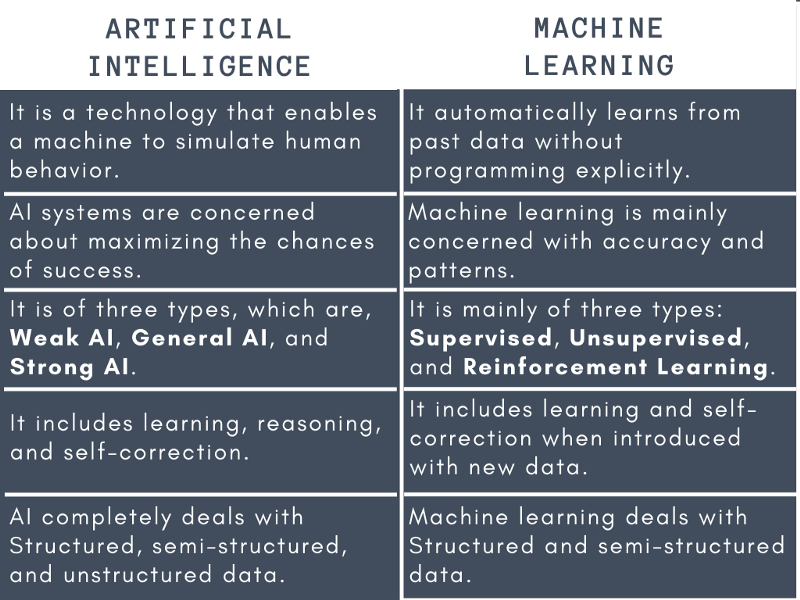
What about Deep Learning(DL)?
Deep Learning: More Accuracy, More Math & More Compute
Deep learning is the main subset of machine learning. It is mainly used when needed to deal with real-world complexity. Deep learning techniques enable this automatic learning(features) from the huge amounts of unstructured data such as text, images, audio(speech), or video.
AI vs ML vs DL
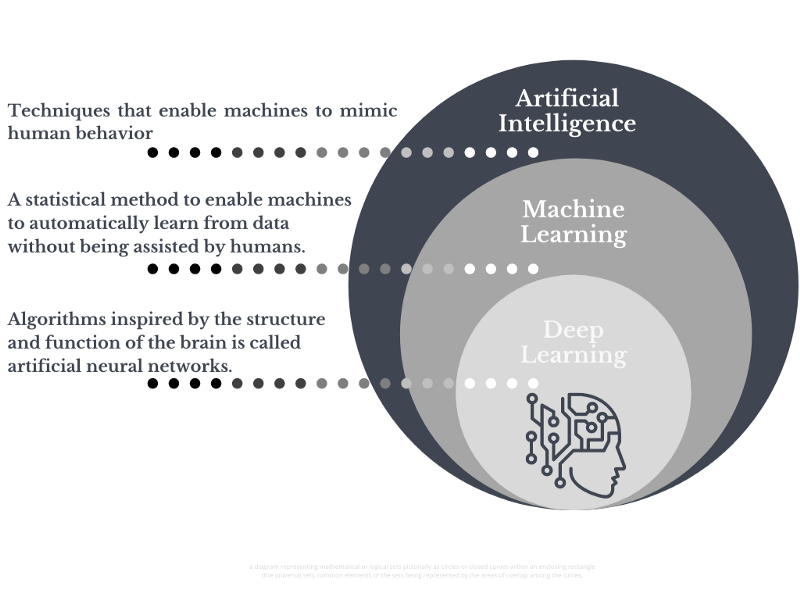
Machine Learning vs. Traditional Programming
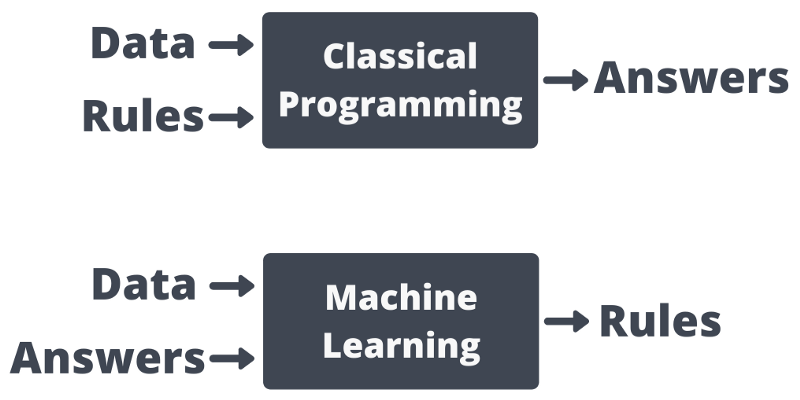
What is Reinforcement Learning(RL)?
Reinforcement learning is goal-oriented learning. It is very similar to how humans learn: through trial. That is, rather than trying to classify or cluster data, you define what you want to achieve, and which metrics you want to maximize or minimize, and RL agents learn how to do that. It is not mutually exclusive with Deep Learning, but rather a framework in which neural networks can be used to learn the relationship between actions and their rewards. Combined, this is called Deep Reinforcement Learning, in which DeepMind trained successfully on the game of Go, numerous video games, and harder problems in real life.
Let’s understand AI in layman’s terms AGAIN!!!
Assume that AI (Artificial Intelligence) is a car 🚗. Machine Intelligence is then the fuel ⛽ that runs it.
It’s not the only singular component that allows the car to run but is one of the more important ones. The concepts of machine learning help systems achieve artificial intelligence.
Systems that run based on ML, learn for themselves and then make decisions. This is the aim of artificial intelligence:
These methods include logic & reasoning, memorization, rules & restriction, calculated approaches (statistical & mathematical approaches), incremental learning, etc. One important thing to notice is that most of the methods which exist today are designed to solve a single task or a single task with some correlated tasks. If we have to solve many tasks through a single machine those methods will come under the category called Artificial General Intelligence.
The best example to understand modern AI engineering is Self Driving cars.
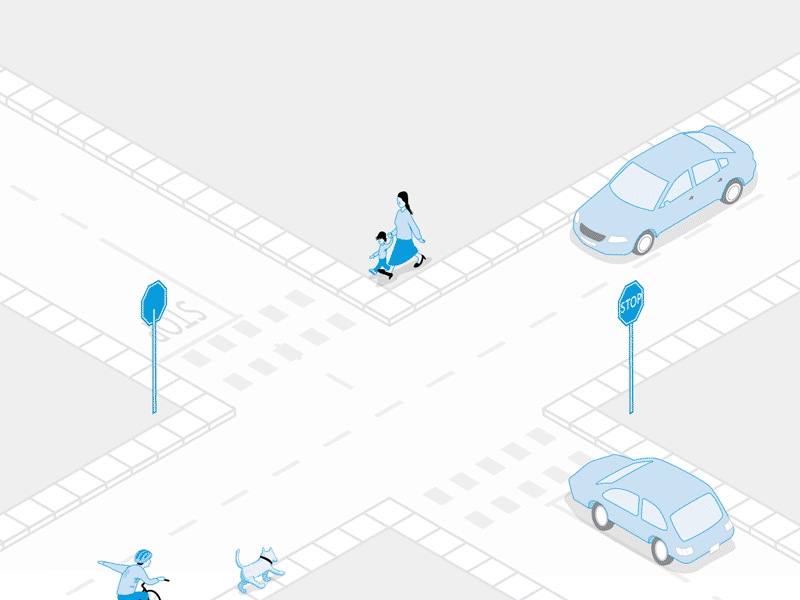
This is one of the AI applications but if we look at all the components then Machine Learning and Deep Learning are what make it possible to achieve Artificial Intelligence. For example, Computer Vision(DL) based applications that identify the objects like other cars, traffic signals, boards, footpaths, people crossing the street, etc, and Machine Learning based applications that can predict how soon a car is going to run out of fuel based on the distance of the destination and traffic.
Is AI Good or Bad For Society?
The first thing we across thought when we think about AI is “Is AI dangerous?”, “Is AI a threat to us?”, “The real risks of AI”, “Artificial intelligence negative impacts” etc. Definitely, we are not talking about those evil robots who are going to take over the world. Let’s talk about the most frequently asked question, “How AI will take away or create new jobs?”
The bottom 90 percent, especially the bottom 50 percent of the world in terms of income or education, will be badly hurt by job displacement…The simple question to ask is, ‘How routine is a job?’ And that is how likely [it is] a job will be replaced by AI, because AI can, within the routine task, learn to optimize itself. And the more quantitative, the more objective the job is — separating things into bins, washing dishes, picking fruits, and answering customer service calls — those are very much scripted tasks that are repetitive and routine in nature. In a matter of five, 10, or 15 years, they will be displaced by AI.
What’s AI Like Today? (What is next in AI?)
So, how might artificial intelligence be used in the future? It’s hard to say how the technology will develop because this field is evolving at a very rapid pace, but most experts see those “commonsense” tasks becoming even easier for computers to process. That means robots will become extremely useful in day-to-day life.
From these basic routine tasks to highly sensitive and impossible tasks(till today) is where AI is used. Self-driving cars, AI-based robots performing critical surgery, etc
Challenges of Artificial Intelligence
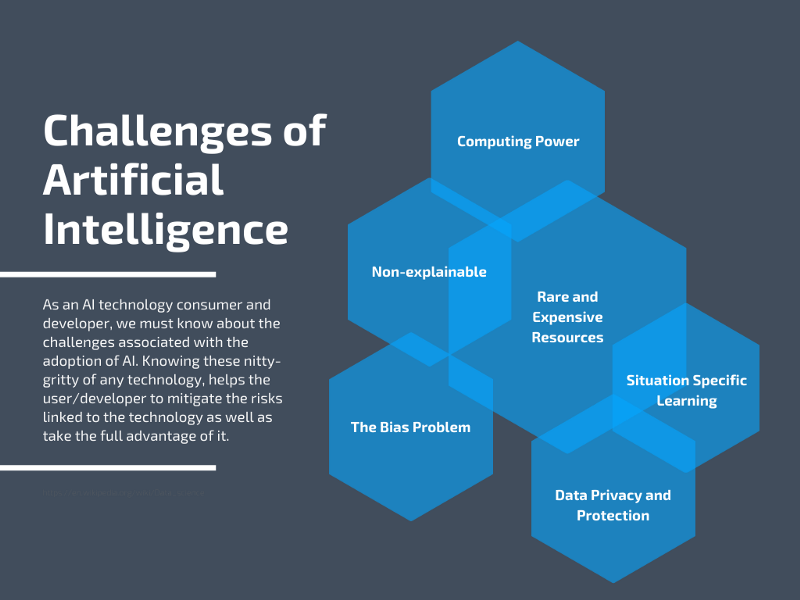
Computing Power
Data hungry Deep Learning algorithms/architecture are getting complex hence it demands an ever-increasing number of cores and GPUs to work efficiently. Cloud Computing and parallel processing systems can be leveraged but it comes with the price that keeps most of the developers away. Hence AI is not very well applied for the applications like drug discovery, asteroid tracking, tracing of cosmic bodies, and much more. It also limits the small to medium organization using AI.
Non-explainable
The “Black box” mysteriousness of AI is the biggest fear among us. We don’t feel comfortable when we don’t understand the rationale behind the decision or how to troubleshoot when issues arise. Hence it creates trust issues and makes it unreliable when AI is used for sensitive tasks which in turn can cause legal challenges.
Data Privacy and Protection
The primary reason AI is so powerful is because of the availability of data and resources to train them. Every day quintillion(a number equal to 1 followed by 18 zeros) bytes of data are created across the globe and with weak & poor data governance the problems like data breaches can increase the chances of using AI for the wrong purpose. Hence Data ethics is the foundation of AI, which includes informed consent, privacy, data security, ownership, objectivity, and transparency.
The Bias Problem
AI feeds on high-quality balanced data. Insufficient, poor, and biased data will lead to biased results that define the nature and specifications of a limited number of people with common interests based on religion, ethnicity, gender, community, and other racial biases. Many serious problems can’t address today because of biased or lack of data. Also because of Data laws, it is difficult to consume local data for building unbiased AI solutions.
Rare and Expensive Resources
AI is still relatively new and most of the industry is still figuring out its adoption. Also, there is a skills shortage — as the deployment of AI technologies requires specialists like data scientists, data engineers, and other SMEs (Subject Matter Experts). Because of a lack of in-house talent, it gets costly to train or bring additional resources. This puts yet another strain on existing budgets or creates the need to convince corporate management to invest larger amounts into AI engineering and infrastructure, which they may be reluctant to do if results are not yet proven. The lack of technical know-how is limiting the adoption AI in most of the organization.
Situation Specific Learning
As most of the applications are trained for specific tasks(called “Applied AI”) hence they cannot transfer their learning from one situation to another. Unlike humans can use their experiences in other situations. We are far from Generalized AI which can jump to any task similar to a human being.
We are in the fourth industrial revolution where we have more data than ever before which makes AI with human-level intuition and the computational power of machines to solve our pressing societal problems. As much as we are awestruck by the potential of AI. We also looked at the actual meaning, differences, and limitations of the technology.
If you like what we do and want to know more about our community 👥 then please consider sharing, following, and joining it. It is completely FREE.
Also, don’t forget to show your love ❤️ by clapping 👏 for this article and let us know your views 💬 in the comment.
Join here: https://blogs.colearninglounge.com/join-us
